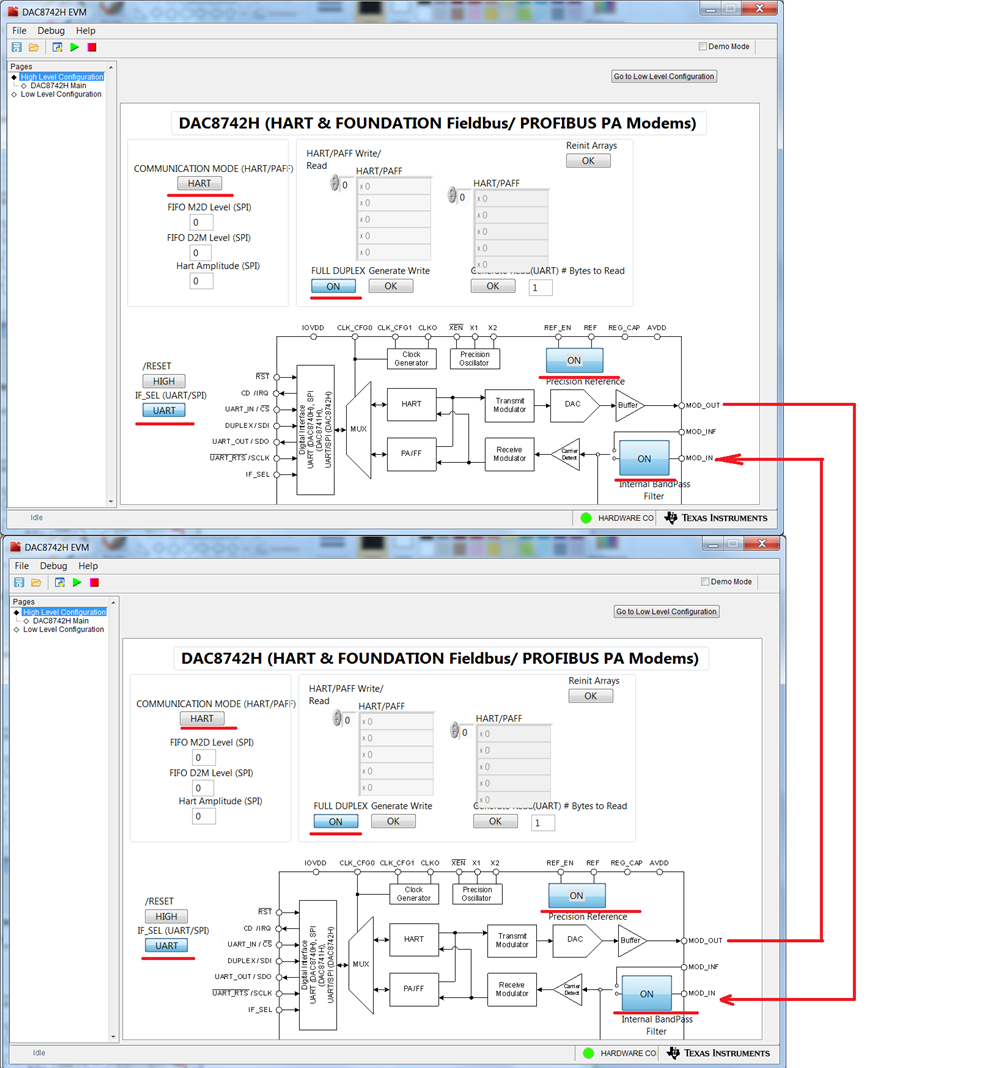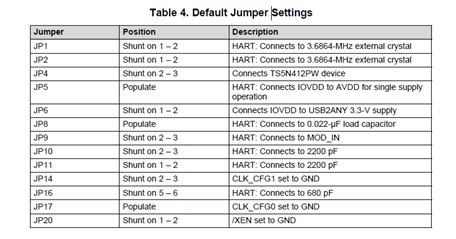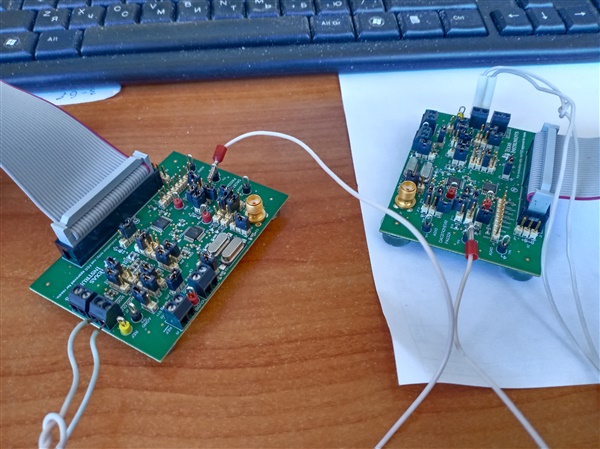Other Parts Discussed in Thread: USB2ANY
Hello, dear friends.
I have some problem with connecting two DAC8742HEVM to each other.
I'm using two DAC8742HEVM with SPI & HART interface. I try to transmit data from DAC8742HEVM №1 to DAC8742HEVM №2 with HART mode on UART interface.

I did the following actions:
1) I connected MODIN module #1 with MODOUTmodule #2 and MODIN module #2 with MODOUT module #1;
2) I connected both modules to different PC with USB2ANY;
3) I connected modules with two PC with DAC8742HEVM GUI;
4) Enabled “full-duplex”, enabled “Internal bandpass filter, enabled “Precision reference” in both DAC8742HEVM GUI;
5) Wrote value and Click “generate write“ in GUI N1 and then “generate read“ in GUI N2
And I’m receive “FF” all time from any value.

If I connect AGND Module №1 to AGND Module №2 I’m receive “00”
Jumper settings in default position in both modules.

Register map in default value in both modules.

Do you help me, what I’m doing wrong?
P.S.
I take a test transaction data with HART mode on UART interface with one Module: connecting MODIN to MODOUT, switch ON “full-duplex”, switch ON “Internal bandpass filter”, switch ON “Precision reference”. I’m clicking “generate write“ and then “generate read“, and it’s work correct.


